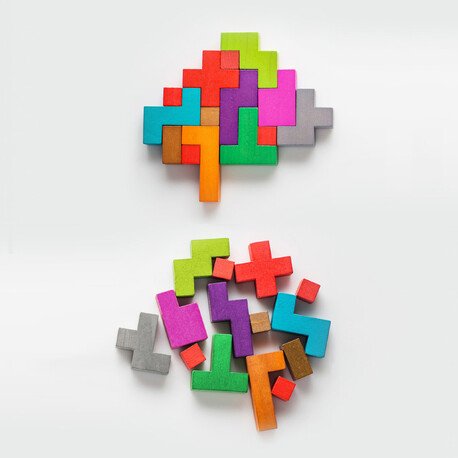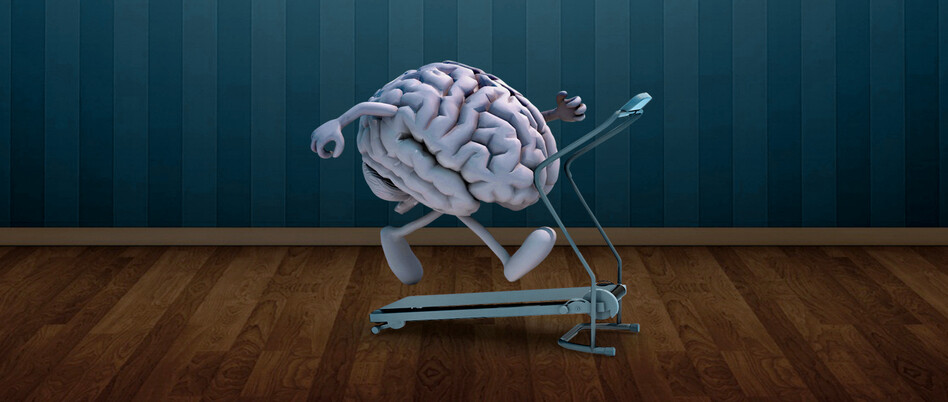Neuroplasticity is a technical word, but when you break it down, it’s easy to understand. In this context, Neuro refers to the physical architecture of your brain, while Plasticity simply means ‘easily shaped or moulded’. Put together, neuroplasticity refers to the capacity of your brain to be shaped and reconfigured.
The brain in two paragraphs
Your brain is the physical structure through which your mind processes everything: your thoughts, feelings, memories, perceptions, conclusions, decisions, attitudes, etc. Neurons are the tiny threads of tissue that act like pathways along which your thoughts and feelings travel.
There are 100 billion neural pathways inside your head! Your brain is a magnificently complex superhighway of connected routes.
Is your brain hardwired?
Scientists used to believe the brain was hardwired, that once specific neural pathways were laid down and strengthened by usage, these routes would remain in place permanently. But recent advances in neuroscience have found that this isn’t true.
We now know that the brain reshapes and behaves more like a group of muscles. When you exercise a particular muscle consistently, it becomes stronger and more capable. Neglect that particular muscle and it wastes away.
The same is true of the neural pathways laid down in our brain. The more you use a particular neural route, the stronger it gets and the easier it becomes for a thought pattern to travel down it. The less you use that route, the weaker and less effective it becomes until it is unusable. Like a broken-down road.
High School French
Remember high school French lessons? Learning was slow and difficult at first because there were no neural pathways along which French language could travel. These pathways had to be ‘laid down’ which you did through sheer repetition under the threat of upcoming exams. Then French became easier.
Why? Because your consistent use of French gave your brain the impression that this foreign language wasn’t going away, so your brain made the process easier by widening and strengthening the French routes. The same principle is true for guitar lessons, learning to ride a bike, fixing a car, performing the haka, or mastering Excel.
How’s your French today? You can probably remember a few phrases, but that’s about it. That’s because when you stopped studying that language, the disuse of the French neural pathways informed your brain that the synaptic material should be degraded to make room for more useful thought-routes. Use it or lose it is how we commonly describe this phenomenon. Neuroplasticity is the scientific term.
Neuroplasticity: for better or for worse?
Neuroplasticity works for good and bad thoughts, for good and bad feelings, for good and bad actions, memories, perceptions, conclusions, decisions, attitudes, etc. If you lay down neural pathways and repeatedly use them, your brain will organise itself to make it quicker and easier to use those mind-routes. That’s called programming.
It’s why many of us get stuck. It’s also the way to get free. What you need are the tools and know-how to break up the unhelpful mind-routes and replace them with neural pathways that lead to quick and easy change.
I can help you with that.
That’s where my coaching comes in
Understanding neuroplasticity is a foundational part of my coaching. By giving you the knowledge and tools you need to work with your magnificent brain, I can help you make the shift you have been looking for.
In light of that, here’s another term you should know: Neuro-Linguistic Programming (NLP).
Neuro refers to the way our brains and minds work (neuroplasticity being a part of that).
Linguistic is the science of language and explores the relationship between words and meaning.
Programming speaks of the automatic performance that occurs when pre-set instructions are in place.
When you put it all together, Neuro-Linguistic Programming is the strategic use of words and concepts to reshape your brain/mind. With the correct techniques, the right words and concepts will help you break up harmful neural pathways (bad programmes). The right words and concepts are also the tools for laying down the helpful neural pathways (good programmes) that will help you get unstuck.




